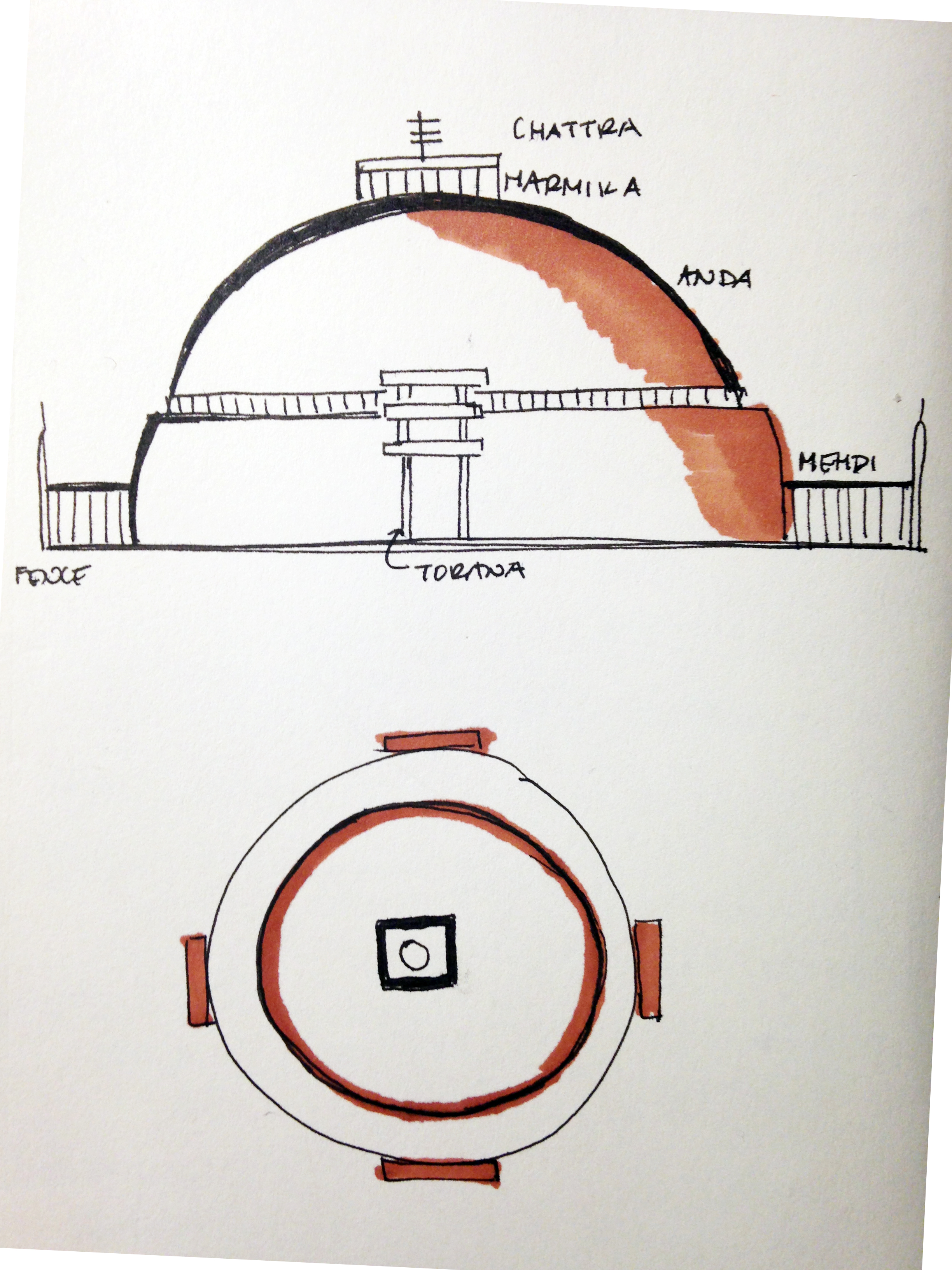Sacred Spaces / Blog Post # 2
Next up in our review of sacred spaces is that of the Great Stupa as found in early Buddhism and later in Hindu Temple Architecture. Three types of buildings are associated with the religious architecture of the 3rd century BCE in India, including viharas (monasteries), stupas (places to venerate relics) and chaityas (shrines or prayer halls) which later were known as temples.
The Stupa
The Great Stupa and Sanchi in central India is one of the earliest stupas and serves as a prototype for later generations of this form of religious architecture. Pilgrims would circumambulate the stupa which spanned 120 feet wide at ground level and on a raised platform, moving from east to west. Every part of the stupa has a symbolic meaning, described briefly below:
Anda (hemispherical mound) is reminiscent of a mound of dirt that covered the Buddha's remains, with the earliest stupas containing relics of the Buddha in the mound.
Harmika is a square railing which surrounds the mound of dirt and thus marks it as a sacred burial site. Above it sits the chattra which is a central pillar that supports an umbrella form. It is used symbolically to protect the mound of dirt from the elements. The three circular disks represent the three Jewels or Triantha of Buddhism, including the Buddha, Dharma (Buddhist teachings or religious law) and Sanga (monastic community).
Peripheral elements include the enclosure wall with decorated gateways, or toranas, at the cardinal directions along with the circular terrace, or mehdi, which supports the anda and serves as a platform for circumambulation. In plan (shown bottom of the image above), is a simple open gathering area primarily for holding relics.
The Buddhist site of Sanchi serves as a precedence for ages of temples that proceed it, a well-preserved site depicting the evolution of symbolism embedded in these religious buildings.
Take a look at contemporary Buddhist architecture that invites reflection to the user and harmony by design .


